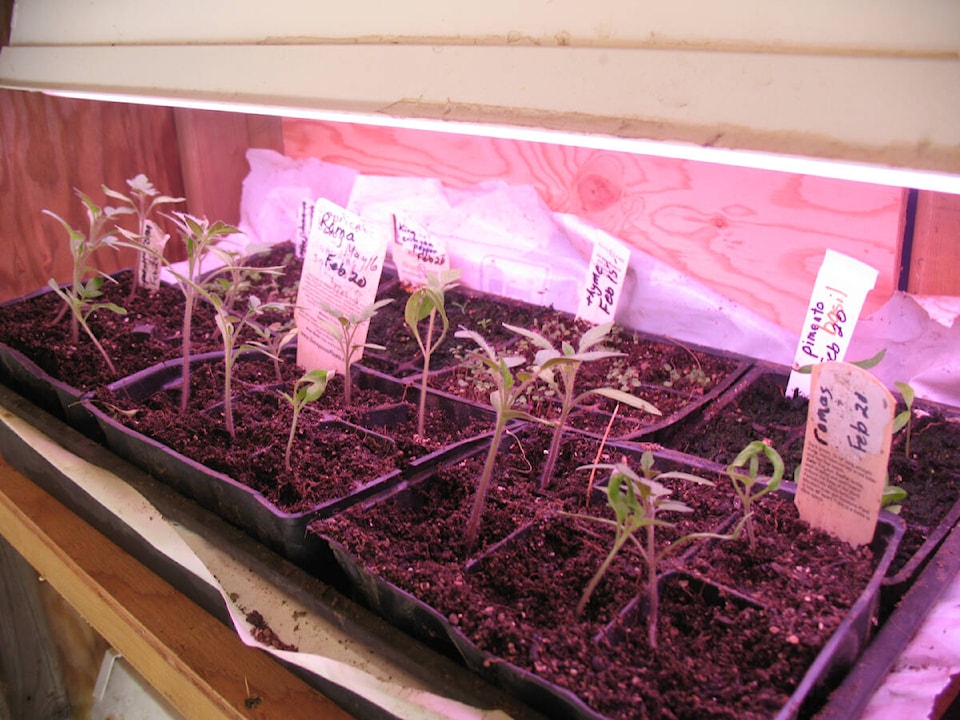By Mary Lowther
We were wandering around Fields in Lake Cowichan yesterday when David pointed out their seed display, with each packet costing only $1.25, a lot less than the $4.99 to $5.99 asked for elsewhere. At first I dismissed his suggestions as background noise, but when I actually listened to him I was shocked to discover he was right! It had to happen sometime.
I have been sourcing quality seed for longer than I am prepared to admit and have never before encountered the Matchless seed company of Waterloo, Ont. Still, as David pointed out, at this price the risk would be worth it even if less than half the seed is viable. I grabbed six packets in the hope that I can grow them out to save seed that has become acclimatized to this area. Given the spiralling cost of most packets, what have I got to lose?
In February I started some of my previously saved seeds plus a few purchased ones, in flats of homemade potting soil placed under grow lights in the seed table David built. The lights are monitored by a timer set to stay on for 16 hours a day so plants grow quickly. I’ve already repotted the lettuce, tomatoes, savoy cabbage and onions into larger cells, and will have to do more soon.
I have been using a mix of one third coir (coconut fibre), one third vermiculite and one third garden soil, adding two cups of organic fertilizer for every cubic foot. I have quite a bit of leftover BioFlores brand fertilizer I bought at the hydroponics store in Duncan so I’ll start using that plus fish fertilizer when I water the plants.
Coir comes in heavy, well packed squares that require softening with water before they can be used. I put the blocks into a large plastic tub, poured water over them and closed the lid. They need an astonishing amount of water and once they’re hydrated I break them apart before mixing the coir with the other amendments. Coir takes a bit of effort to break up and is not as easy to use as peat moss, but it saves our endangered peat bogs from depletion and is sustainably produced, heat treated, washed and screened before being sold. I’m not sure if they manage to lose all the chemicals used to grow the coconuts so I’m not planning on using it long term and will develop some finely screened compost to use instead.
When we started building this garden David predicted we would need to produce compost in mass quantities, so that makes it twice he has been right. Perhaps I should send him out to buy some lottery tickets, or more packets of seed. Fields has a lot left at a great price.
Please contact mary_lowther@yahoo.ca with questions and suggestions since I need all the help I can get.
